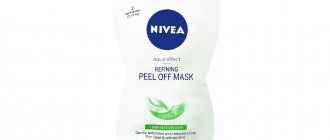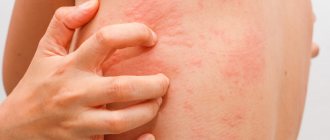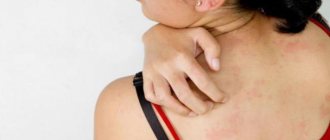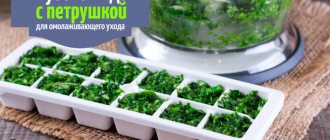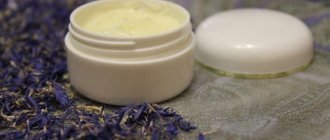Useful tips
Cracks and rough heels are not only an aesthetic problem. This is also quite a serious discomfort: a person experiences pain when walking, and women also have difficulty buying beautiful, open shoes for the summer.
To prevent this from becoming a serious problem over time, the rough layer of skin on the heels must be constantly removed.
In order to get rid of cracks and rough skin on the heels, you need to follow several fairly simple, but at the same time quite effective methods.
Cause of rough skin
Most people are faced with the acute problem of rough and rough skin on their heels.
The reasons can be very different. These include excess weight, frequent wearing of high-heeled shoes, poor-quality and uncomfortable shoes and heavy loads on the feet.
It can also be a lack of microelements and essential vitamins, or the consequences of constantly being on your feet. Cracked and rough heels can be quite serious diseases of the kidneys and endocrine system, as well as a consequence of hormonal changes, infections and fungus.
Rough skin on the heels occurs when water and lipids are lost through the skin,
and the body, due to various circumstances, cannot compensate for their loss on its own. And if you consider that the feet are under constant stress, the skin on the heels becomes rough, bursts, resulting in cracks.
It is extremely important to constantly remove rough skin on the heels, and then be sure to lubricate it with a nourishing cream. You should take care of the skin of your feet every day, only in this case will you be able to get rid of rough skin on your heels.
It should be noted that before any self-medication at home, you need to consult a specialist in order to identify the cause.
Recipes
Steaming the skin of the feet with soda is carried out with the addition of various components. They have additional healing and cosmetic effects.
Baths
For this procedure, take 2 liters of hot water and 2-3 tbsp. l. soda The powder is thoroughly dissolved in the liquid, a few drops of your favorite essential oil are added.
How to steam your heels
The water in the basin, where salt, soda powder and other ingredients have been added, should be at a comfortable temperature. Steaming is carried out for 15-20 minutes.
Cover the container with a towel to prevent the liquid from cooling quickly. Using a bath, you can steam away stubborn dirt and dead skin cells. It is not recommended to carry out the procedure for more than 30 minutes.
Scrub
The recipe for this cosmetic product is simple. It will require 3 ingredients: baking soda, ground oatmeal, water.
Dry ingredients are taken in equal parts, liquid is added until a thick paste is obtained.
It is applied to the feet in a circular motion, carefully treating the heels .
The mixture helps smooth out rough skin and softens it.
Getting rid of cracked heels at home
Constant use of folk remedies will have good results and will help cope with even advanced cases.
How to remove dead skin with a knife
Don't be alarmed. There is no need to remove it with a razor, a knife, or any other sharp objects. For this purpose, there are special tools and devices in the cosmetic composition that help remove keratinized growths from the heels:
- Natural pumice
- Brushes
- Metal scrapers
- Soft peelings and scrubs containing abrasive substances
- Ceramic files
- Milling machines
- Pedicure machines
The scrubbing method is considered the most gentle method of treating heels,
allowing you to clean those formations that are usually not visible to the eye. It can be used once a week after taking a bath. You can prepare a scrub that can moisturize your heels at home.
This will require ten ml. any shower gel and ten ml. coconut oil. Mix the ingredients and add thirty grams of dry ground coffee. Dried coffee is also suitable for use. Apply the resulting composition in a small layer to rough heels, then rub them with light massage movements for ten minutes. If you use this method regularly, you will see results within a few weeks.
Scrubbing at home (video)
When treating heels at home using scrapers and hard brushes, try to watch your movements
. They should not be too strong, but at the same time try to act confidently.
When using machines for cutting manicure, try to use them extremely carefully and carefully,
to avoid infection and skin injury. And also follow some very important rules:
- Never lend your personal instrument to friends or even relatives.
- For each action, try to use only a new blade
- Clean your heels gently, moving from the edges to the center, with minimal pressure on them.
- If you feel pain, simply relax your movements or stop the operation altogether.
Out of habit, this procedure may seem quite complicated at first glance, but this is only until you get used to it. After this, the procedure will begin to bring you pure pleasure.
Additional components
Soda for homemade cosmetics is used in multi-component formulations, which include sea salt, essential oils, juice, and lemon.
Sodium carbonate with soap
Baking soda and ordinary gray laundry soap (72%) help whiten, clean, and heal. Hot mixtures with these components are effective.
The feet are steamed in a hot soda solution for 15 minutes. Then the feet are thoroughly rubbed with soap, a little more hot water is added to the basin, and the procedure is repeated.
The result is soft heels without dirt or cracks.
Salt, iodine
These components are also used to prepare hot baths.
To thoroughly steam the surface of the feet, especially the heels, add 2 tbsp to 2 liters of water. l. sea salt and soda, 3-5 drops of iodine. Steaming is carried out for 15-20 minutes. This way they relieve tension from legs that are tired during the day.
After the procedure, the condition of the skin improves.
Ways to deal with rough heels
Soda baths
This procedure can be performed daily
. To do this, you need to pour four tablespoons of soda into a bowl of warm water and soak your feet in it for fifteen minutes. After the coarsened layer has steamed a little, it can be easily removed with a regular pumice stone or a special nail file. You will not see the effect in one such procedure, be patient, repeat the procedure constantly and the result will not be long in coming.
Special scrubs
We clean the heels for five minutes, rinse them in water and apply a special scrub to them. We rub it in different directions. After this, rinse your feet with water and lubricate with rich cream.
Herbal decoctions
Herbs such as St. John's wort, calendula, sage, chamomile, elecampane are very suitable for decoctions.
. Pour one tablespoon of any herb into one liter of water and bring to a boil. Let the broth boil for about five minutes, then let it brew for about fifteen minutes. Leave your feet in the prepared broth for twenty minutes, then rub them thoroughly with a pumice stone. Rinse your feet with water, apply cream and put on warm socks. For cracked heels, use almond, sea buckthorn or olive oil.
Onion peel
In order to soften the skin of the feet and heal cracked heels, it is recommended to use onion peels.
A handful of husks must be brewed with two liters of boiling water and, covered with a lid, left to steep for one hour in a warm place. Pour a hot broth into a basin and add soda and salt to it, one tablespoon at a time, then put your feet in there and keep them there until the water cools down. Then wipe your feet, brush with butter and raw egg yolk. Put on thin socks, wrap the top with cling film and put woolen socks on top. Usually five such procedures are enough to completely cure cracked legs.
Cedar resin
It so happens that all of the above methods may not work and may not have a positive effect, since the skin on the legs has become significantly rougher and severely cracked. In this case, you should use resin. And the best choice is cedar resin - a kind of sticky substance that is secreted by the bark of a tree.
Resin has a number of medicinal properties:
- Stop bleeding
- Healing purulent wounds
- Destruction of bacteria
- Stimulation of repair of damaged tissues
Rough heels of the feet should be lubricated with resin at night.
. The pain in the leg goes away almost instantly, and the cracks heal in a couple of days, unless, of course, much pressure is put on the legs.
Application of glycerin
Glycerin is a very effective remedy for combating cracked heels.
both in masks and as an additive to foot baths. Take one teaspoon of glycerin per liter of water. You need to soak your feet in the resulting solution for about twenty minutes, then treat them with pumice and lubricate them with cream.
Lemon acid
A good remedy for getting rid of keratinized tissue on the heels is citric acid.
. Lemon can protect against infections. It removes dead cells well. You can tie it to your heels all night, and in the morning remove the bandage and lubricate the skin with baby cream. Do this procedure every day until the skin on your feet becomes soft and tender.
Almond oil
This oil has many beneficial properties
. It is an excellent product for body and face care. Almond oil softens, nourishes and moisturizes the skin, and it can also increase its elasticity. Almond oil contains a lot of vitamin E, which slows down the aging process of cells and is able to remove various skin inflammations. This oil is very soothing to the skin. Before use, it must be heated and rubbed in only when warm.
Treatment with aspirin
Aspirin mixed with iodine and medical alcohol can heal cracked heels.
Treatment takes place in a very short time. First, wash your feet thoroughly, wipe them dry, apply the mixture to your heels, and put on cotton socks on top.
Aspirin can heal wounds, alcohol disinfects, and iodine will dry out the skin. Alcohol can be successfully replaced with vodka. This remedy will only be effective if there is no fungus on the feet.
How doctors remove calluses
The fastest, safest and most painless method is hardware procedures. Removal of the formation is carried out using a special cosmetology device equipped with an automatic cutter fixation system. This eliminates the risk of soft tissue damage. The procedure itself is painless and does not require special preparation. The session time ranges from 10 to 60 minutes. It depends on the number of dry calluses and the degree of their neglect.
Before starting work and during the procedure, the skin is thoroughly disinfected. In case of increased sensitivity, the patient is given topical anesthesia. When treating calluses and corns, the skin is cooled using a spray.
After removing a callus or corns, the skin is polished, and the edges of the treated area are smoothed so that there is no discomfort when walking later. After completion of the procedure, the treated surface is protected with a bandage.
In this way, you can remove any corns, including dry calluses on the foot.
Features of hardware procedures:
- absolute safety – the surface being treated is thoroughly disinfected, which eliminates the risk of infection;
- speed – unlike home procedures, the removal of corns and calluses in a cosmetology clinic is performed quickly and efficiently. One procedure is enough;
- painlessness – automatic fixation of the cutter on the equipment protects the skin from accidental injury and pain;
- no contraindications – anyone can use hardware callus removal.

